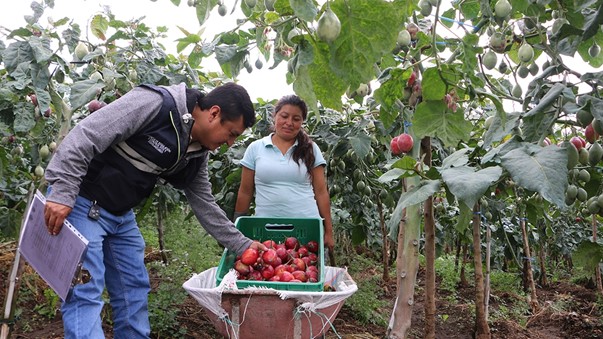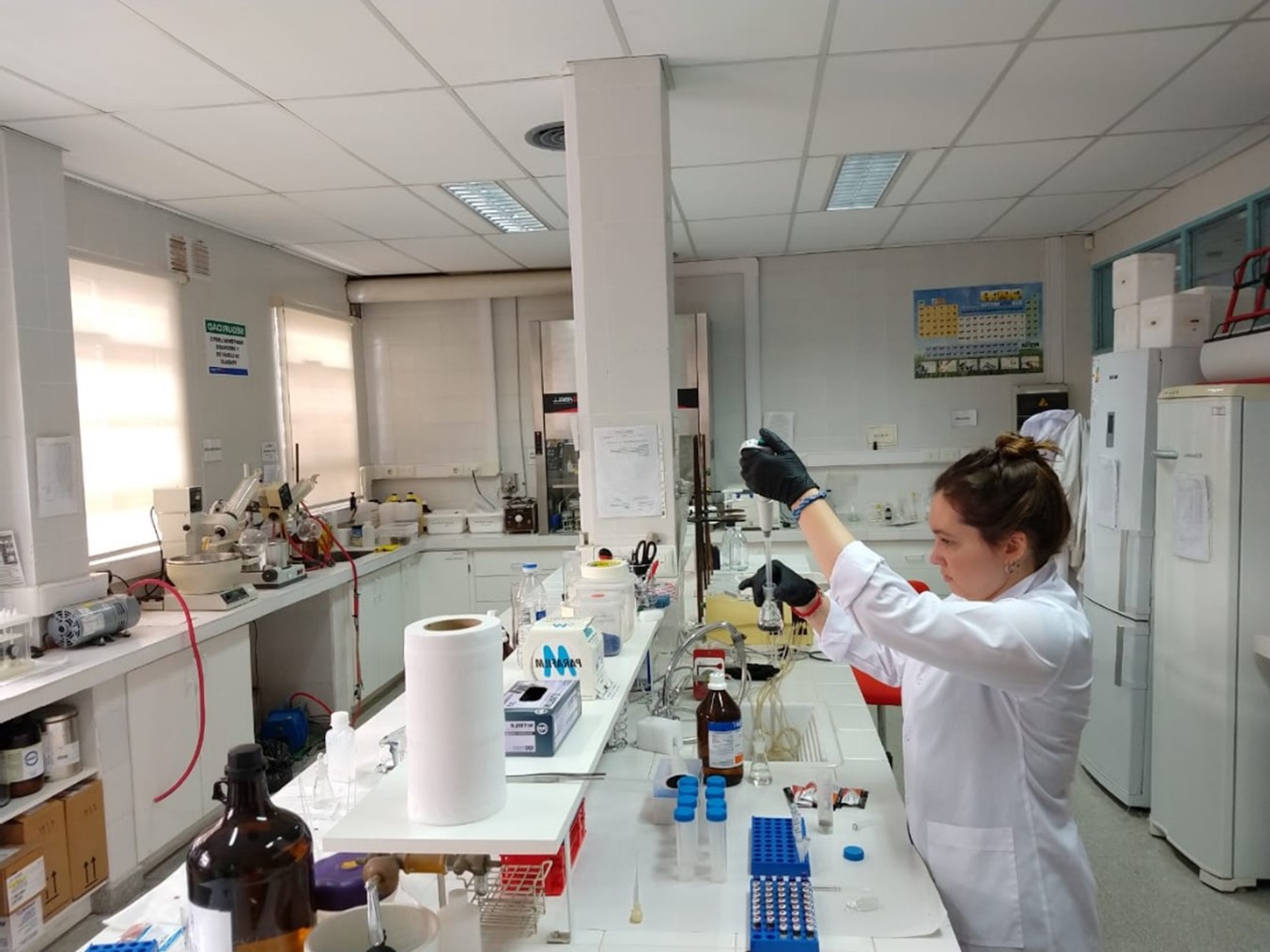 Improving Regional Capacities in Food Safety Monitoring in Latin America and the Caribbean
Enhancing the safety of food to protect human health and increase economic growth and prosperity
Improving Regional Capacities in Food Safety Monitoring in Latin America and the Caribbean
Enhancing the safety of food to protect human health and increase economic growth and prosperity

Challenges
Toxic residues in agricultural food products and contamination that can occur during harvesting, packaging and storage processes pose a real and potential danger to the health of consumers. Many countries in Latin America and the Caribbean face significant challenges in preventing and controlling the levels of these residues and contaminants to ensure that food is safe for human consumption and that it meets the required standards for export. International agreements require food products destined for export to be certified by accredited laboratories to safeguard consumers from the risk of exposure to chemical and natural contaminants associated with agricultural production.
Towards a Solution
From 2014 to 2021, the International Atomic Energy Agency (IAEA), in partnership with the Food and Agriculture Organization of the United Nations (FAO), supported 19 countries in Latin America and the Caribbean to build and strengthen the capabilities of national laboratories to use nuclear techniques to accurately analyse the level of chemical contaminants and pesticide residues in food products.
The project contributed to protecting the environment and enhancing the safety of food for human consumption in the region. It also helped increase export opportunities, maximized the capacity of local laboratories and reduced reliance on outsourcing to accredited laboratories abroad, saving both time and money. The project directly contributed to SDG targets 2.1 (universal access to safe and nutritious food) and 3.9 (reduce mortality from environmental pollution).
The project transferred expertise, technology and methodologies that built national and regional capacities in food safety. It was implemented through expert missions, training courses and meetings that enabled regional exchanges of expertise and experiences.
In particular, technical know-how on the use of nuclear and conventional analytical techniques was transferred to five reference laboratories in Chile, Colombia, Mexico, Panama and Uruguay and equipment was procured by the IAEA. These five laboratories took the lead in analysing and assessing the physical infrastructure and competences of other, less advanced laboratories in the region. Based on an initial assessment, the five main laboratories were furnished with the necessary equipment and consumables and the other laboratories received expertise and capabilities in specific techniques and methods through staff training.
Capacity was built in sampling, quality control, statistical treatment and interpretation of analytical results, laboratory accreditation, equivalence of food control procedures and mutual recognition of results. This helped harmonize analytical standards and control methods in line with international standards to enhance the validity of the data produced.
To date, 13 of the participating laboratories have been accredited in food safety for export and are now able to produce high-quality data with reference to over 100 inorganic contaminants, pesticides, mycotoxins and veterinary drugs in food products. These laboratories have established an independent non-profit network, the Network of Analytical Laboratories in Latin America and the Caribbean (RALACA). The network serves as a knowledge hub for laboratories in the region and, via a digital platform, enables the sharing of expertise and resources to advance capacities for monitoring and evaluating and fosters communication between stakeholders, including decisionmakers. Data produced by these laboratories informs policies and good practices in the agricultural and industrial production of food sectors and have led to a reduction in the use of chemical fertilizers. These positive outcomes ensure the sustainability of the project.
Currently, RALACA is active in Spanish and Portuguese speaking countries of the Latin America and the Caribbean region, and provisions have been made to open the network to English-speaking countries of the Caribbean.
Based on the results achieved, the IAEA launched another regional project in 2020 to establish a common repository for timely, accurate, reliable and secure data in the area of food safety. To facilitate evidence-based risk assessment, the database follows the example of the European Food Safety Agency (EFSA)[1] and is expected to be managed and controlled by the RALACA network. Regional partners, such as the Inter-American Institute for Cooperation on Agriculture (IICA), the International Regional Agency on Agricultural Health (OIRSA) and the Caribbean Agricultural Health and Food Safety Agency (CAHFSA) are partner organizations in the initiative.
Contact Information
Countries involved
Supported by
Implementing Entities
Project Status
Project Period
URL of the practice
Primary SDG
Primary SDG Targets
Secondary SDGs
Secondary SDG Targets
Similar Solutions
| NAME OF SOLUTION | Countries | SDG | Project Status | |
|---|---|---|---|---|
100% Online Electronic Apostille and Legalization Sharing Colombia’s effective e-government system with other countries in the region |
Argentina, Belize, Bolivia (Plurinational State of), Brazil, Chile, Colombia, Costa Rica, Cuba, Dominican Republic, Ecuador, El Salvador, Honduras, Mexico, Nicaragua, Panama, Peru, Uruguay, Venezuela (Bolivarian Republic of) | 16 - Peace and Justice Strong Institutions | Completed | View Details |
Adapting Digital Payment to Initiate Rapid Response During Pandemic Bangladesh government disbursed cash aid to 5 million most vulnerable families through mobile financial service in order to minimize the financial impact during COVID 19 within the shortest period of time. |
Argentina, Belize, Bolivia (Plurinational State of), Brazil, Chile, Colombia, Costa Rica, Cuba, Dominican Republic, Ecuador, El Salvador, Honduras, Mexico, Nicaragua, Panama, Peru, Uruguay, Venezuela (Bolivarian Republic of) | 03 - Good Health and Well-being 05 - Gender Equality | Completed | View Details |
Addressing Racial and Ethnicity-based Discrimination and Strengthening the Protection of Rural Afro-descendants UNFPA supports data disaggregation as a tool to fight racism and ethnic discrimination |
Argentina, Belize, Bolivia (Plurinational State of), Brazil, Chile, Colombia, Costa Rica, Cuba, Dominican Republic, Ecuador, El Salvador, Honduras, Mexico, Nicaragua, Panama, Peru, Uruguay, Venezuela (Bolivarian Republic of) | 01 - No Poverty 02 - Zero Hunger 03 - Good Health and Well-being 05 - Gender Equality 06 - Clean Water and Sanitation 11 - Sustainable Cities and Communities 16 - Peace and Justice Strong Institutions | Ongoing | View Details |
Addressing the Philippine Dairy Sector Challenges Exchanging knowledge between Argentina and the Philippines to improve Philippine local dairy production |
Argentina, Belize, Bolivia (Plurinational State of), Brazil, Chile, Colombia, Costa Rica, Cuba, Dominican Republic, Ecuador, El Salvador, Honduras, Mexico, Nicaragua, Panama, Peru, Uruguay, Venezuela (Bolivarian Republic of) | 08 - Decent Work and Economic Growth 17 - Partnerships for the Goals | Ongoing | View Details |
ADELANTE Triangular Cooperation European Union – Latin America and the Caribbean |
Argentina, Belize, Bolivia (Plurinational State of), Brazil, Chile, Colombia, Costa Rica, Cuba, Dominican Republic, Ecuador, El Salvador, Honduras, Mexico, Nicaragua, Panama, Peru, Uruguay, Venezuela (Bolivarian Republic of) | 10 - Reduced Inequalities | Ongoing | View Details |

